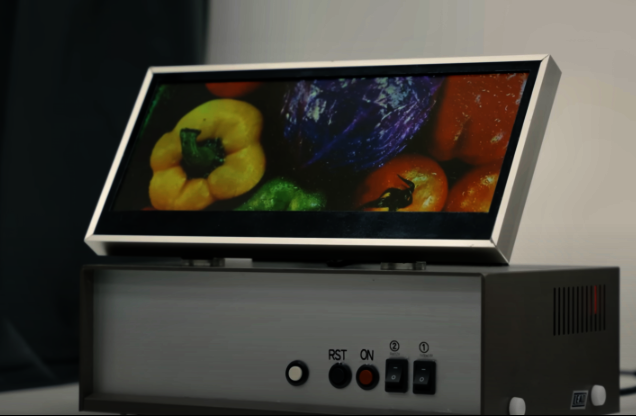Japanese TV brand Sharp has staked its claim for the future of the TV display industry, unveiling what it says is the world's first QDEL television to a select group of journalists at the Consumer Electronics Show last week.

The technology was seen by Digital Trends, which said the company declined to divulge any details of its pricing or release date, or even its plans to mass produce the displays.
Sharp said in its presentation that QDEL stands for Quantum Dot Electroluminescent, and although it does feature the quantum dots found in Mini-LED and QLED displays, but is also quite different.
One of the main differences is the light source. Typically, quantum dots will absorb light from a source such as LEDs or OLED pixels before converting it into different colors. However, QDEL instead receives energy directly from the electricity that’s supplied to the TV, and transforms this into colour. As such, QDEL doesn’t require a separate light source, which should make the displays thinner and cheaper to build.
QDEL displays do not require LED backlights or OLED to create colour and brightness. Instead, the quantum dots do everything by themselves. That’s because the quantum dots in QDEL are different. They’re microscopic in size, and they possess subpixels with red, blue and green colours. According to Sharp, by eliminating the backlight, it can deliver purer images.
Sharp said there are no concrete plans regarding when it will start mass producing its QDEL displays. The prototype display shown at CES was reportedly very small – just 12-inches – though Sharp also said it has built a 30-inch display using the same technology.
Sharp also said that QDEL uses the same manufacturing methods as traditional LCD displays, which means that it can be mass produced in existing factores without a significant investment. That should ensure prices remain affordable when the technology becomes available.
It remains to be seen how good QDEL really is, but in theory it should be able to achieve similar quality colours, contrast and black levels as found on OLED displays, but without any of the downsides. OLED is known to degrade over time due to its organic nature, but QDEL won’t have this problem as quantum dots are built to last for a long time. The technology may also be more efficient in terms of energy usage, and it could deliver richer colours and higher brightness once Sharp has perfected it.
QDEL technology is certainly very promising, because although newer displays such as QD-OLED, WOLED with Micro Lens Arrays and MicroLED are extremely good, they also have their limitations. OLED and LCD technology requires additional layers to be integrated into the display panel because it still uses a backlight or OLED materials. Both of these degrade over time, leading to poorer performance in older TVs.
Sharp’s QDEL technology could potentially last much longer while delivering the same high quality images, and perhaps even a boost in colour and brightness alongside the additional longevity.
That said, this is all speculation for now and it doesn’t take into account any possible advances by Samsung Display and LG Display, which are the world leaders in premium display technology right now. Sharp, on the other hand, has long been perceived as a mid-ranking display maker.
In addition, QDEL may not even make its debut in TVs. The technology may well be better suited to smartphones or tablets, or even car infotainment displays, and these are both very big markets in their own right. So it depends what Sharp decides to focus on first, though it was very clear that TV is a potential application.
In any case, this is what CES is all about – showcasing innovative new technologies that may, or may not, one day find a place in our homes.